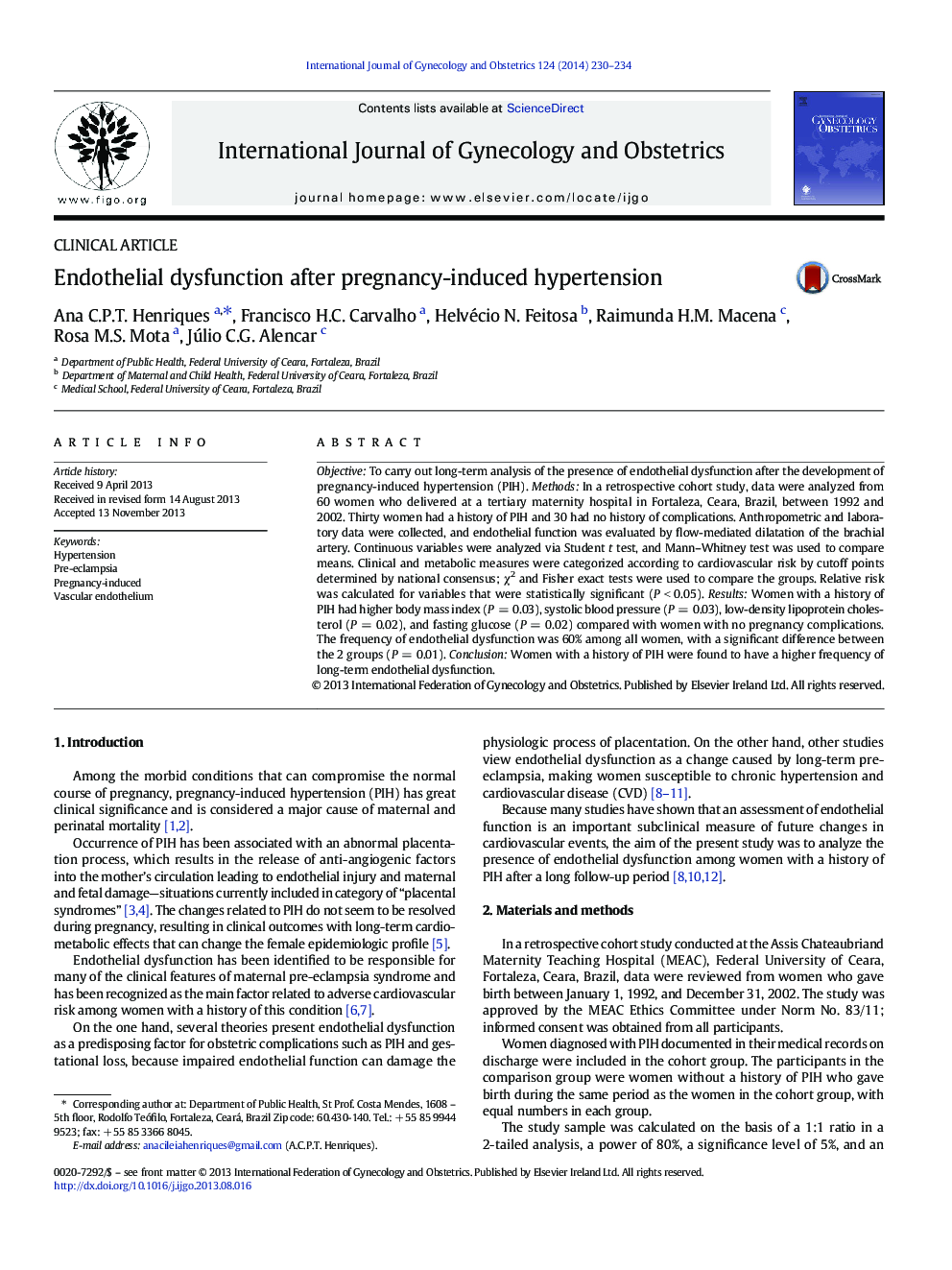| Article ID | Journal | Published Year | Pages | File Type |
|---|---|---|---|---|
| 3954192 | International Journal of Gynecology & Obstetrics | 2014 | 5 Pages |
ObjectiveTo carry out long-term analysis of the presence of endothelial dysfunction after the development of pregnancy-induced hypertension (PIH).MethodsIn a retrospective cohort study, data were analyzed from 60 women who delivered at a tertiary maternity hospital in Fortaleza, Ceara, Brazil, between 1992 and 2002. Thirty women had a history of PIH and 30 had no history of complications. Anthropometric and laboratory data were collected, and endothelial function was evaluated by flow-mediated dilatation of the brachial artery. Continuous variables were analyzed via Student t test, and Mann–Whitney test was used to compare means. Clinical and metabolic measures were categorized according to cardiovascular risk by cutoff points determined by national consensus; χ2 and Fisher exact tests were used to compare the groups. Relative risk was calculated for variables that were statistically significant (P < 0.05).ResultsWomen with a history of PIH had higher body mass index (P = 0.03), systolic blood pressure (P = 0.03), low-density lipoprotein cholesterol (P = 0.02), and fasting glucose (P = 0.02) compared with women with no pregnancy complications. The frequency of endothelial dysfunction was 60% among all women, with a significant difference between the 2 groups (P = 0.01).ConclusionWomen with a history of PIH were found to have a higher frequency of long-term endothelial dysfunction.
